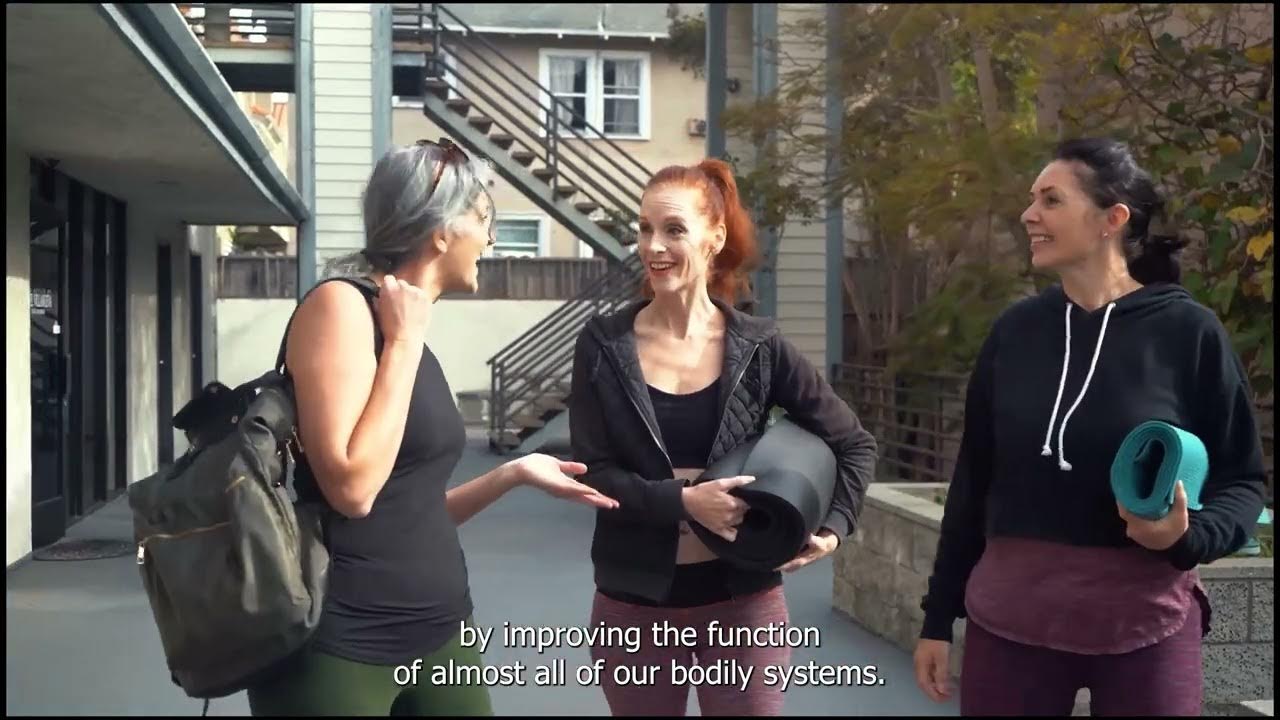Aktivitas Fisik dan Olahraga
Summary
TLDRIn this educational session, Azel Nabila explains the difference between physical activity and exercise, emphasizing that while all exercise involves physical activity, not all physical activities qualify as exercise. She outlines the key principles of exercise, including the importance of warm-up, main workout, and cool-down phases, and introduces the FITT principles (Frequency, Intensity, Time, and Type). The session also explores the concept of physical literacy, which involves motivation, competence, and knowledge for lifelong engagement in physical activities. Overall, the script highlights the value of physical literacy as a foundation for maintaining long-term physical health and well-being.
Takeaways
- 😀 Physical activity refers to any bodily movement that results in increased energy expenditure, such as walking, sweeping, or climbing stairs.
- 😀 Sports are a structured, planned, and continuous form of physical activity that follows specific rules and aims to improve or maintain physical fitness.
- 😀 A person engaging in physical activity is not necessarily participating in sports unless the activity is structured, planned, and follows specific rules.
- 😀 Key components of sports include: warm-up, main exercise, and cool-down, each serving to prevent injuries and enhance performance.
- 😀 The 4 key principles of exercise (FITT): Frequency (how often), Intensity (how hard), Time (duration), and Type (type of exercise) help to structure effective workouts.
- 😀 Physical literacy involves motivation, competence, knowledge, and a lifelong commitment to physical activity, promoting health and fitness.
- 😀 Motivation and confidence are essential components of physical literacy, encouraging individuals to enjoy and value physical activity.
- 😀 Physical competence involves the development of skills that enable an individual to perform various physical activities effectively.
- 😀 Knowledge and understanding are crucial in recognizing the benefits of physical activity, as well as understanding its role in maintaining health and fitness.
- 😀 Physical literacy fosters lifelong engagement in physical activity, which positively impacts physical, psychological, and social well-being.
- 😀 A literate individual is more likely to remain active throughout their life, performing physical activities with competence and confidence.
Q & A
What is the difference between physical activity and exercise?
-Physical activity refers to any movement of the body that involves the muscles and bones, increasing energy expenditure. Exercise, however, is a planned, structured, and repetitive form of physical activity aimed at improving or maintaining physical fitness components, often following specific rules.
Can you give examples of physical activities and sports?
-Examples of physical activities include sweeping, walking, climbing stairs, washing a car, or doing laundry. On the other hand, sports examples include running, playing tennis, weightlifting, football, gymnastics, and boxing.
What makes an activity 'exercise' and not just physical activity?
-An activity becomes exercise when it is performed in a structured, planned, and repetitive manner with a focus on improving specific fitness components. Exercise includes key stages such as warming up, engaging in core exercises, and cooling down.
What are the benefits of warming up before exercise?
-Warming up helps increase the heart rate, body temperature, and blood flow to the muscles, preparing the body for more intense physical activity. It also reduces the risk of injuries by making the muscles and joints more flexible.
What is the purpose of cooling down after exercise?
-Cooling down helps gradually lower the heart rate and blood pressure, allowing the body to return to its resting state. It also helps in reducing muscle soreness and promoting better recovery after exercise.
What does the FITT principle stand for in exercise?
-The FITT principle stands for Frequency (how often you exercise), Intensity (how hard you exercise), Time (how long you exercise), and Type (the kind of exercise you do). These factors are important to tailor exercise programs to individual goals and needs.
What is physical literacy, and why is it important?
-Physical literacy is the ability to move with competence and confidence in a wide range of physical activities. It involves motivation, physical competence, understanding of movement, and a lifelong commitment to being active. It is crucial because it encourages regular physical activity and improves overall health and well-being.
Who introduced the concept of physical literacy?
-The concept of physical literacy was introduced by Margaret Whitehead, who defined it as a foundation that enables individuals to engage in physical activities confidently and competently throughout their lives.
What are the main components of physical literacy?
-The main components of physical literacy include motivation and confidence to participate in physical activities, physical competence in performing movements and exercises, knowledge and understanding of the benefits of physical activity, and a lifelong engagement in physical activities.
How does physical literacy impact long-term health?
-Physical literacy promotes long-term health by encouraging individuals to be active throughout their lives. It helps develop habits of physical activity that improve physical, mental, and social well-being, reducing the risk of chronic diseases and enhancing quality of life.
Outlines

This section is available to paid users only. Please upgrade to access this part.
Upgrade NowMindmap

This section is available to paid users only. Please upgrade to access this part.
Upgrade NowKeywords

This section is available to paid users only. Please upgrade to access this part.
Upgrade NowHighlights

This section is available to paid users only. Please upgrade to access this part.
Upgrade NowTranscripts

This section is available to paid users only. Please upgrade to access this part.
Upgrade NowBrowse More Related Video

PE & Health 11 LESSON 1: Aerobic, Bone Strengthening Muscle Strengthening

Physical activity versus exercise

Top 10 Benefits of Exercise

Stop Walking 10,000 Steps/Day (do this instead)

El ejercicio físico mejora la plasticidad en el cerebro

Grade 8 PE & Health Q1 Ep 3 Plan, Prepare and Act it Out / Importance of Sexuality to Family Health
5.0 / 5 (0 votes)